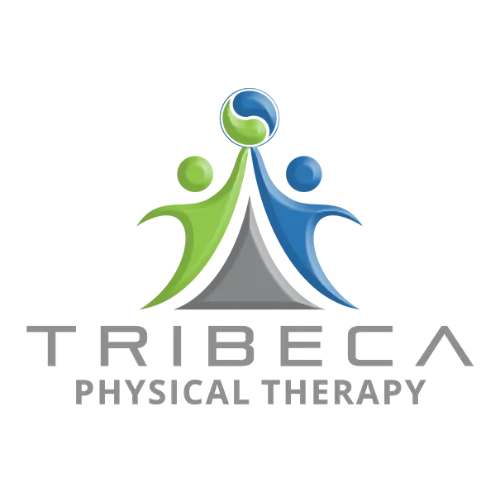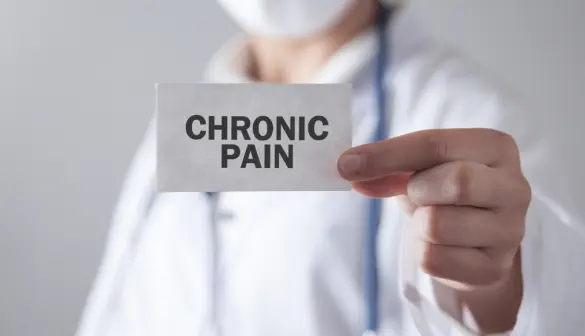Chronic pain can be described in many ways, such as throbbing, stabbing, pinching, aching, or any uncomfortable or unpleasant feeling. Our body is structured to feel pain when there is something wrong or when there is tissue damage. Pain is part of the body’s defense mechanism. It serves as a signal for us to act and to prevent further tissue damage. It is felt when special nerves (called nociceptors) detect tissue damage and send signals to transmit information along the spinal cord to the brain. The brain then decides what to do about the pain. One illustration is if you touch a hot surface, a message will travel through a reflex arc in the spinal cord and cause an immediate contraction of the biceps muscles. This contraction of the biceps will pull your hand away from the hot surface. The same thing happens when you step on a sharp object, your hamstrings will immediately contract, bending your knee and bringing you abruptly off the sharp object.
Pain is categorized as acute or chronic. Acute pain can be mild, lasts a short time, and is often a signal that your body has been injured. It can also be severe where extreme pain is felt. The earlier an acute pain gets managed, the higher the chance it would be resolved. While Chronic can be considered as ongoing pain and usually lasts longer than six months and is often the result of a disease that may require ongoing treatment. Have you ever felt an endless, excruciating pain? Like as if the discomfort you were feeling won’t stop and still persevere despite different ways you’ve already done? Then maybe you are one of those who are suffering from chronic pain.
Chronic pain seriously affects the patient’s daily activities, social, family environment, and quality of life. It is recognized as a major public health problem, producing a significant economic and social burden. One study provides an outline for understanding how different diseases are related through an assessment of sensorial, cognitive/affective, and interpersonal factors. Chronic Pain can affect a patient biologically (Nociceptive, Injury, Trauma, Infection, Illness, Cancer, Nerve Damage), Psychologically (Sleep, Fear, Anxiety, Depression, Coping Skills) Socially (Work, Family, Social Network) which all equate to severe detrimental health-related quality of life.
Sometimes patients are so focused on alleviating their physical aches that they neglect to address the psychological effects of their chronic pain. Ignoring the toll chronic pain has on the mind can be a major mistake. Your mental state can aggravate your physical pain, making it even more difficult to manage. Tips for Coping with the Mental Effects of Chronic Pain. Educate yourself about your condition to reduce fear of the unknown. Practice meditation. Exercise (only as much as you are able, and with your pain medicine clinician’s permission!) Consider seeing a mental health counselor for talk therapy. Some people might need medication to treat insomnia, depression, or anxiety. Practice mindfulness: focus on the here and now. Do not fall into self-medication! Using substances might temporarily alleviate physical or emotional pain, but this is never a good long-term solution.
Physical therapy interventions treat pain in several ways. They can strengthen muscles and joints and help you learn to move and perform daily activities in ways that don’t aggravate old injuries or put you at risk of new ones. They can treat inflammation and address the movement dysfunction that’s at the core of much chronic pain. Finally, physical therapy can re-educate your central nervous system to make it less sensitive to pain signals. Let’s look at some of the physical therapy modalities and treatments that could ease your chronic pain.
Patient Education – Your physical therapist can’t be with you 24/7 to make sure you perform your exercises correctly, move in ways that protect you from re-injury, and make the best lifestyle choices to support your recovery from chronic pain. But that’s OK because part of physical therapy is empowering the patient to take charge of his or her own recovery, through patient education.
Exercise – Some physical therapy exercise is passive, meaning the patient just relaxes while the physical therapist moves or stretches one or more of his or her body parts. Some are active, meaning the patient must do it under his or her own power. All exercise can be valuable for strengthening muscles, improving flexibility, increasing joint mobility, and strengthening the muscles around a weak, painful joint to increase joint stability.
Manual Therapies – also called bodywork, include many treatments that a therapist administers using his or her hands. Manual treatments can include massage, which eases pain and promotes healing by helping muscles relax and boosting circulation. Soft-tissue mobilization may be used to increase mobility around a joint by breaking up scar tissue, releasing the tension, treating edema, and addressing myofascial adhesions, or fibrous areas of muscle tissue that have lost their elasticity. Direct manipulation of joints can be used to restore alignment and improve functioning.
Transcutaneous Electrical Nerve Stimulation (TENS) – Uses low-voltage electrical currents to stimulate an injured or painful area for pain relief. The electricity is administered through electrodes attached to your skin. How does this work to relieve pain? It’s thought that the electrical stimulation from the electrodes intercepts pain signals from the nerves in that area, lessening the experience of pain. The electrical stimulation may also boost the production of endorphins, neurotransmitters that serve as natural painkillers.
Hot and Cold Therapies – this includes the application of heat or cold to the painful area to reduce inflammation, relieve pain, and promote healing.
Graded Motor Imagery – Graded motor imagery, or GMI, is a chronic pain treatment that uses your brain’s own plasticity and neural connections to treat your chronic pain. The therapy uses techniques such as visualizing movement without moving, using mirrors to trick your brain into thinking that you’re moving a weaker or painful body part when you’re moving a stronger body part and using left-right discrimination exercises to recalibrate crucial parts of your brain that help in pain recovery. GMI helps you regain confidence in your physical strength and relearn motor control while reconfiguring how you respond to pain.
Sensory Re-Education- When you suffer a serious injury or illness, chronic pain can occur when the nervous system, overwhelmed by constant, severe pain signals, goes haywire and continues to sense pain even after the injury has healed. Sensory re-education for chronic pain can help desensitize your nervous system to these pain signals so that they are no longer overwhelming. The re-education protocol usually uses light stimuli on both the unaffected and affected areas, so that the brain can begin to compare sensations in these two areas and decrease sensitivity in the affected area.
Many physical therapy interventions can treat or even completely relieve chronic pain, without the need for surgery or drugs. If you suffer from chronic pain, don’t give up. With the right treatment, you, too, could once again enjoy a life without pain.
If you don’t know where to start, just give send Tribeca Physical Therapy a message today.



